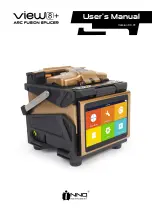
SETUP
PLEASE REFER TO THE EXPLODED VIEW DRAWING IN THIS MANUAL IN ORDER TO IDENTIFY PARTS.
1. Line up the two mounting holes in the base of the hydraulic jack (#11) with two holes in the lift's jack base pad. The hydraulic jack's release pedal
should be facing towards the lift's rear caster wheel assemblies. Secure the hydraulic jack to the lift's jack base pad with the (#12) spring washers
and (#13) bolts provided.
2. Raise the lift rails so the top cross member tube of the lift linkage will rest on top of the hydraulic jack's ram piston. Align the hole in the top of
the jack's ram with the holes in the top cross member tube (#19) and secure them with the (#15) pin, (#4) washer and (#16) spring clip provided. It
may be necessary to slightly extend the jack's ram to align all holes together. This may be accomplished by securing the pump pedal (#14) in the
hydraulic jack's pump linkage with the (#12) spring washer and (#20) bolt provided. Pump the pedal slightly to align the holes.
3. The cross member tube and lift linkage (#19) rotate on two rivets on the base of the lift. Remove the (#27) washers and (#28) spring clips on the two
(#25) pins on the base of the lift. Spread the arms of the lock bar (#23) so the holes in the arms will fit over the two pins (#25), and secure the lock
bar to the pins with the (#27) washers and (#28) spring clips.
4. Install the T-handle (#34) on top of the pushing rod (#21).
PURGING AIR FROM THE HYDRAULIC SYSTEM:
Sometimes air can get trapped in the hydraulic jack's system during shipping and handling. An air trapped system can prevent the jack from
getting a complete incremental pump stoke and the lift rails feel spongy. Follow these instructions:
1. Depress the release pedal while simultaneously activating the pump pedal about 15 to 20 times.
2. Stop depressing the release pedal. Continue activating the pump pedal so the lift rails rise to maximum extension.
3. If the condition seems better but not fully corrected, repeat steps 1 and 2 until all air is purged from the system.
OPERATING INSTRUCTIONS
This is the safety alert symbol used for the OPERATING INSTRUCTIONS section of this manual to alert you to potential personal
injury hazards. Obey all instructions to avoid possible injury or death.
IMPORTANT:
Before attempting to raise any vehicle, check vehicle service manual for recommended lifting surfaces.
GENERAL INSTRUCTIONS:
1. Once the lift is in the proper work location, the T-handle can be used to roll the lift under the vehicle. Since the jack is only designed to be used on a
hard level surface, there should be no difficulty in rolling the lift under a vehicle. Make sure there are no obstructions, cracks or crevices in the
floor underneath the vehicle.
2. The lift is raised by activating the foot pedal. The locking arms slide over the notched lock positions as the lift rises. Once the desired work height
has been reached, slowly depress the release pedal until the locking arms engage with the closest notch.
3. In order to lower the lift, the locking arms must be disengaged by pumping the jack up so the locking arm assembly can be clipped in the retaining
latch. Once the assembly is retained in the latch, depress the release pedal slowly to lower the load.
LIFTING A MOTORCYCLE OR ATV:
Removal or installation of any heavy motorcycle components that would affect and change the weight distribution and balance of the motorcycle on
the lift will require additional support equipment. FOR EXAMPLE: Removing one tire and wheel combination will shift the weight of the motorcycle to
the opposite side of the lift rails. Make sure to support the tire and wheel combination not being removed with stands or other means of support before
performing the work.
1. Lift only on areas of the vehicle as specified by the vehicle manufacturer. This lift is designed for lifting vehicles with an exposed frame
undercarriage. The weight of the vehicle must be evenly balanced on the two lift rails. The center of balance on an engine is not necessarily the
center of balance point of the whole vehicle.
IMPORTANT: DO NOT ATTEMPT TO RAISE ANY VEHICLE THAT CANNOT BE PROPERLY
BALANCED ON THE LIFT.
2. Since lifting and lowering procedures require two people, one person must hold the motorcycle in a vertical position. The second person must look
underneath the vehicle frame to make sure there are no components extending down beyond the frame that can be damaged by lifting. The
second person can also determine if it is necessary to leave the motorcycle kickstand extended or retracted in order for the lift rails to make
contact with the motorcycle frame. The second person (person operating the lift) must slide the lift under the vehicle making sure the lift arms are
properly positioned under the vehicle frame. The lift can now be pumped up under the frame. There should be equal distance on both sides of
a motorcycle as it is lined up with the lift rails. Since the lift arcs when pumped, the lift operator must compensate for the arcing movement so the
motorcycle is equally spaced on the lift rails when the lift rails come in contact with the motorcycle frame. Once the lift rails make contact with the
motorcycle frame, the motorcycle can be lifted very slowly while the first person continues to hold the motorcycle in a vertical position. During
this initial lift procedure, both people can determine whether the motorcycle is properly balanced. If it is not, the motorcycle should be lowered to
the ground and lift rails should be repositioned under the motorcycle until the center of balance is achieved. This initial lift procedure must be
repeated until the proper balance is achieved.
IMPORTANT THE MOTORCYCLE MUST ALWAYS BE HELD IN AN UPRIGHT VERTICAL
POSITION BY ONE PERSON AT ALL TIMES DURING THIS INITIAL LIFT PROCEDURE.
3. Once the center of balance point is achieved, the motorcycle may be lifted only to where both tires clear the ground. The lift operator can now
secure the vehicle to the lift by using nylon motorcycle tie down straps. There are tie down loops fore and aft of each lift pad. The higher the straps
are positioned on the motorcycle, the more stability is achieved. After the two tie down straps are connected to the motorcycle frame and the tie
down loops on the lift rails, make sure to tighten each strap while maintaining the upright vertical position of the vehicle.
OWNER'S MANUAL
MODEL 6616
CAPACITY: 3/4 TON
ATV/MOTORCYCLE LIFT























